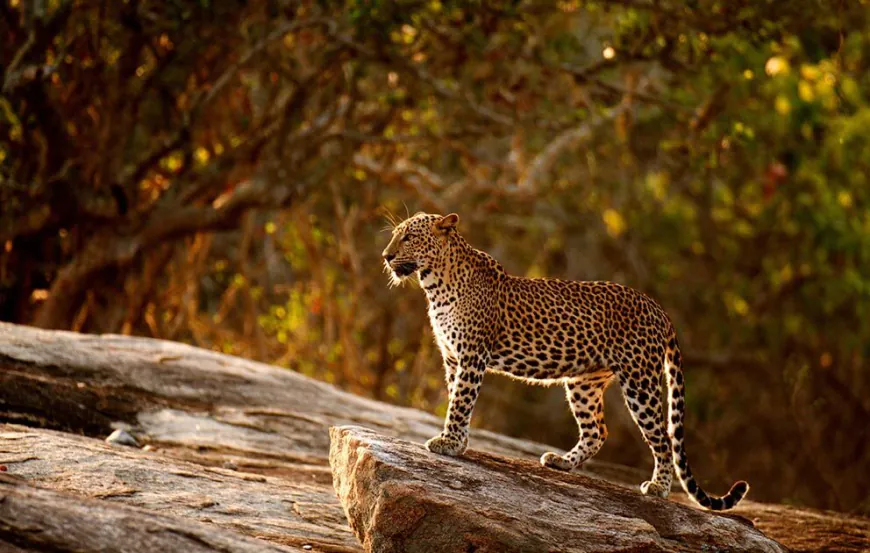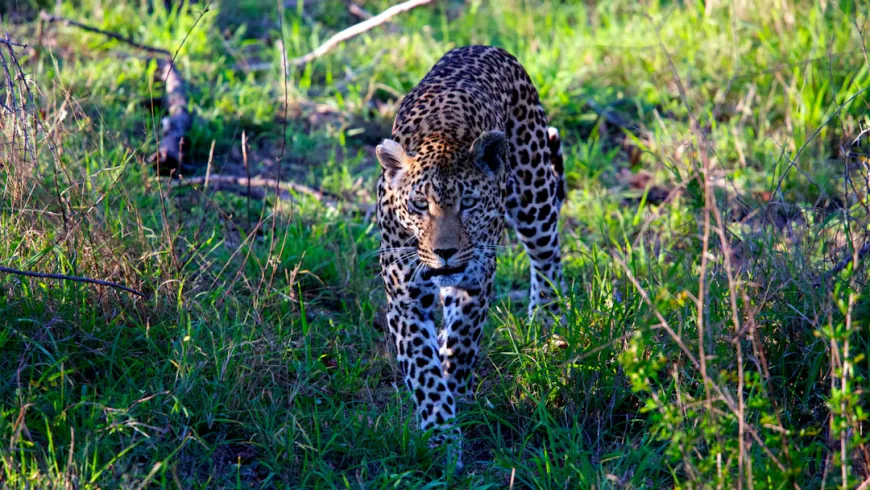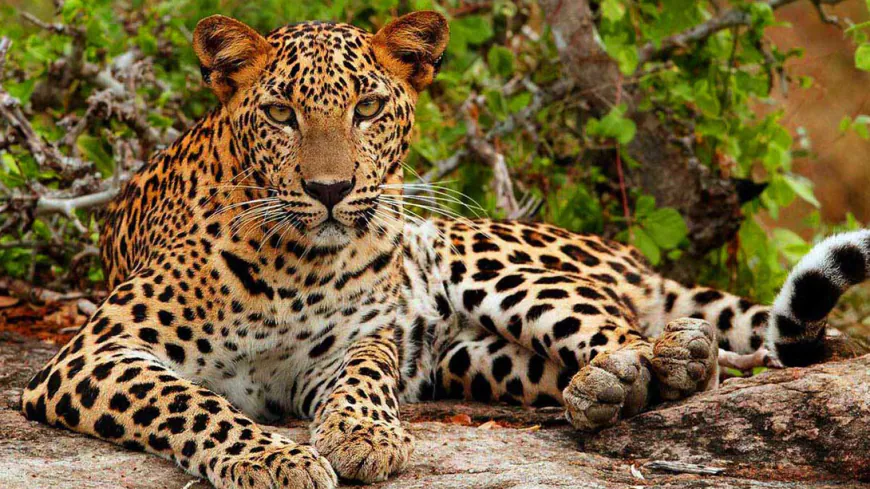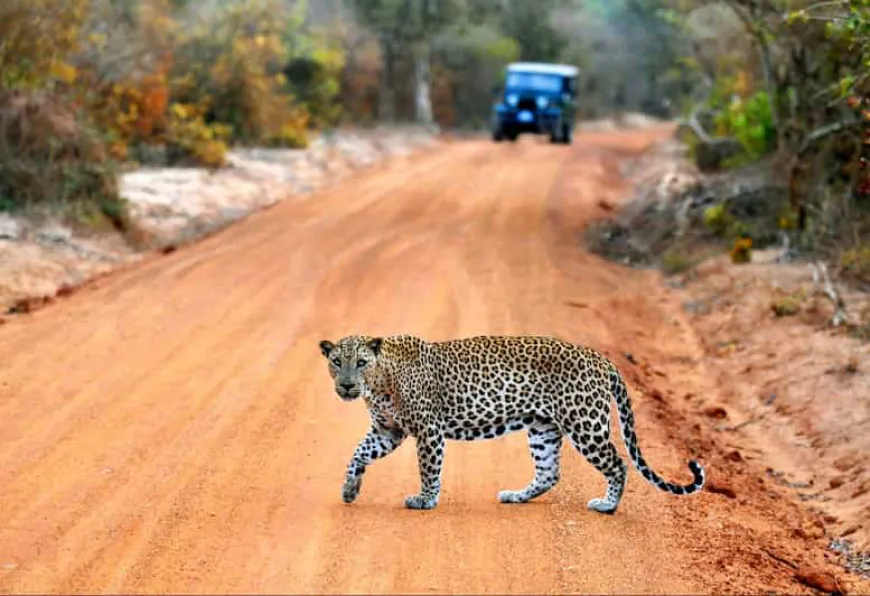Yala Safari Park: Top Routes and Tips for Leopard Sightings
Explore the best safari routes and zones in Yala Safari Park for leopard sightings. Get tips on what to bring and best practices for a successful safari adventure.

-
Yala Leopard Spotting Guide

Yala National Park in Sri Lanka boasts the highest density of leopards in the world, offering visitors a unique opportunity to spot these elusive big cats in their natural habitat. The park's Block 1 is home to around 40 leopards, making it a prime destination for wildlife enthusiasts seeking a glimpse of these majestic creatures.
-
Prime Leopard Zones

Yala National Park is divided into several blocks, each offering unique opportunities for leopard sightings. Here's an overview of the key zones within Yala and their characteristics:
Block Features Leopard Sighting Potential Block 1 - Highest leopard density - Diverse habitats including forests, grasslands, and water bodies - Most accessible and popular zone Excellent Block 2 (Yala East) - Rich biodiversity - Varied ecosystems from dense woodlands to coastal stretches - Requires special permits for access Good Block 3 - Pristine wilderness areas - Dense forests and open grasslands - Less crowded than Block 1 Good Block 4 - Secluded area with breathtaking landscapes - Tranquil lakes and vast grasslands Moderate Block 5 - Off-the-beaten-path experience - Diverse habitats - Lower leopard density than Block 1 Moderate Block 1 is the most promising zone for leopard sightings, with the highest density of these big cats in the park. Its diverse habitats, including forests, grasslands, and water bodies, provide ideal conditions for leopards to thrive. The abundance of prey species and water sources in this block attracts leopards, making it a hotspot for sightings.
Block 2, also known as Yala East, offers good potential for leopard sightings due to its rich biodiversity and varied ecosystems. The area between the Manik Ganga and Kumbukkan Oya rivers provides ample hunting grounds and water sources for leopards. However, access to this block is restricted and requires special permits.
Block 3 is known for its pristine wilderness areas and diverse ecosystems, offering good opportunities for leopard sightings. The less crowded nature of this block compared to Block 1 may increase the chances of observing leopards in a more natural setting.
Blocks 4 and 5 offer moderate potential for leopard sightings. While they may have lower leopard densities compared to Block 1, their secluded nature and diverse habitats still provide opportunities to spot these elusive cats. These blocks are ideal for visitors seeking a more off-the-beaten-path safari experience.
The unique features of each zone, such as water bodies, rocky outcrops, and diverse vegetation, attract leopards by providing essential resources like prey, water, and shelter. Leopards are known to favor areas with dense cover for stalking prey and resting, as well as open areas for hunting. The varied landscapes within these blocks cater to these preferences, making Yala National Park an ideal habitat for leopards.
It's important to note that while Block 1 offers the highest chances of leopard sightings, exploring other blocks can provide a more diverse and less crowded safari experience. Regardless of the block visited, early morning and late afternoon drives are generally recommended for the best chances of spotting leopards, as these are their most active periods.
-
Leopard Tracking Hotspots

-
Safari Essentials and Etiquette
To ensure a successful leopard safari in Yala National Park, proper preparation and adherence to best practices are essential. Here's a comprehensive guide on what to bring and how to maximize your chances of spotting leopards while maintaining a safe and ethical safari experience.
Essential Items Purpose Binoculars For distant wildlife viewing Camera with zoom lens To capture wildlife moments Lightweight, neutral-colored clothing For comfort and camouflage Wide-brimmed hat Sun protection Sturdy, closed-toe shoes For comfort and safety Sunscreen (SPF 30+) Sun protection Insect repellent To ward off mosquitoes and other insects Reusable water bottle To stay hydrated Light snacks For energy during long drives Small backpack or daypack To carry essentials When packing for your safari, prioritize items that will enhance your wildlife viewing experience and protect you from the elements. Binoculars are crucial for spotting distant wildlife, especially elusive leopards. A camera with a good zoom lens will allow you to capture memorable moments without disturbing the animals. Opt for lightweight, breathable clothing in neutral colors like khaki or olive to blend in with the environment and stay comfortable in the heat.
Sun protection is vital, so pack a wide-brimmed hat and high-SPF sunscreen. Insect repellent will help keep mosquitoes and other bugs at bay, especially during dawn and dusk safaris. Don't forget to bring a reusable water bottle to stay hydrated throughout the day.
Best Practices for Leopard Sightings:
- Be patient and quiet: Leopards are shy and elusive. Remain silent in the vehicle and avoid sudden movements to increase your chances of spotting one.
- Listen to your guide: Experienced safari guides are skilled at identifying animal calls and tracks. Pay attention to their instructions and insights.
- Scan the landscape: Leopards often rest on tree branches or rocky outcrops. Continuously scan the environment, paying special attention to these areas.
- Visit during optimal times: Early mornings and late afternoons are the best times for leopard sightings, as these are their most active periods.
- Book multiple game drives: Increasing the number of safaris you take improves your chances of spotting a leopard.
- Respect wildlife and park regulations: Never attempt to approach or feed wild animals. Follow all park rules to ensure the safety of both visitors and wildlife.
- Use appropriate photography equipment: If you're serious about wildlife photography, consider upgrading your equipment to capture high-quality images in various lighting conditions.
- Be assertive but respectful: If you spot something interesting, clearly communicate with your guide to stop the vehicle. Use phrases like "Can we please stop?" rather than vague exclamations.
- Share prime seating: If you're sharing a vehicle with others, offer to swap seats between drives to ensure everyone gets a chance at the best viewing positions.
- Stay in the park: Consider booking accommodation within or near the park to maximize your time in the wildlife-rich areas.
Remember, while these tips can increase your chances of spotting leopards, sightings are never guaranteed. Approach your safari with patience and an open mind, appreciating all aspects of the park's diverse ecosystem. By following these guidelines and respecting the natural environment, you'll contribute to the conservation efforts of Yala National Park while enjoying a memorable and ethical safari experience.
What's Your Reaction?








































